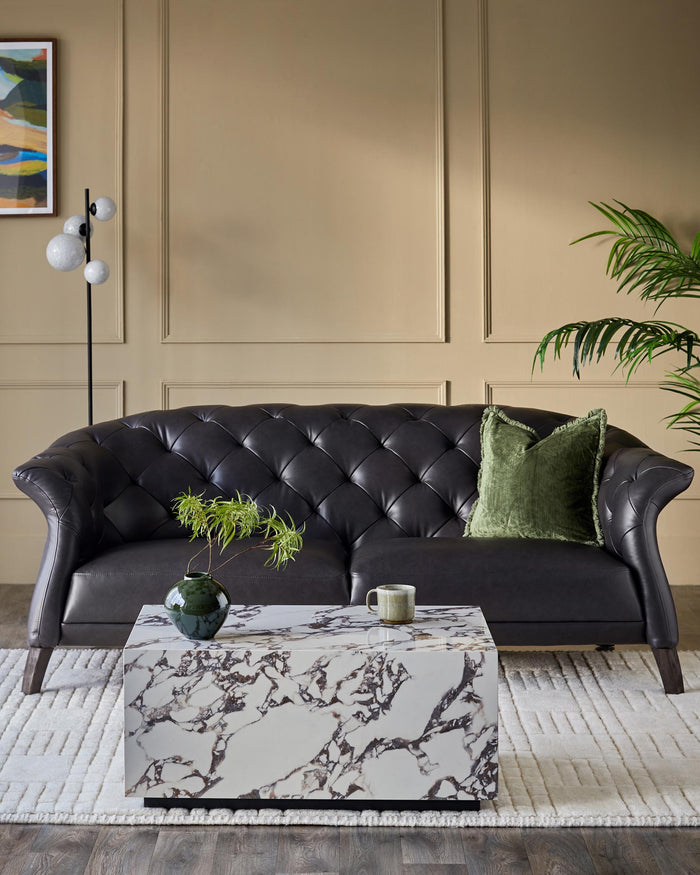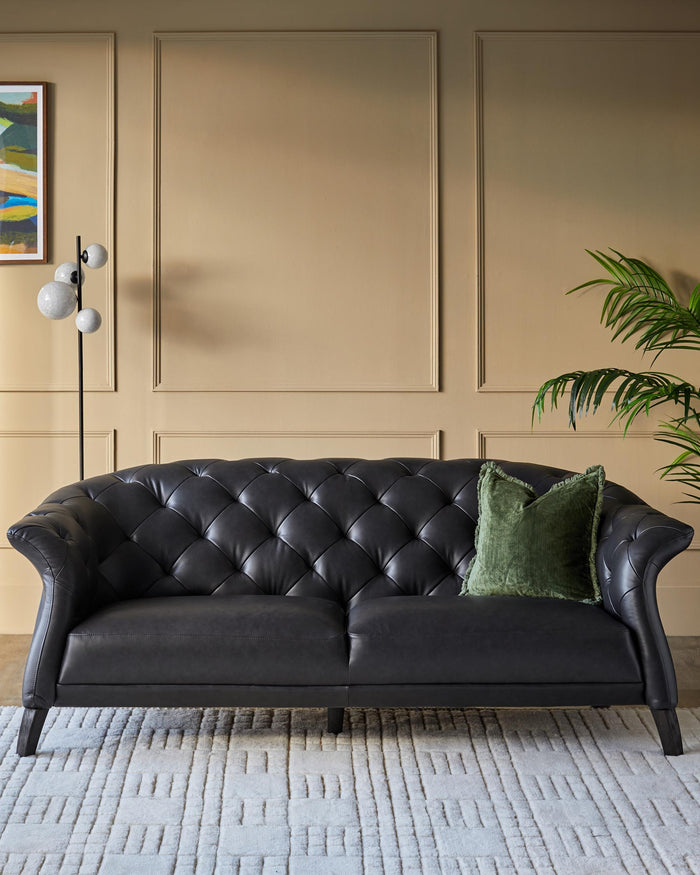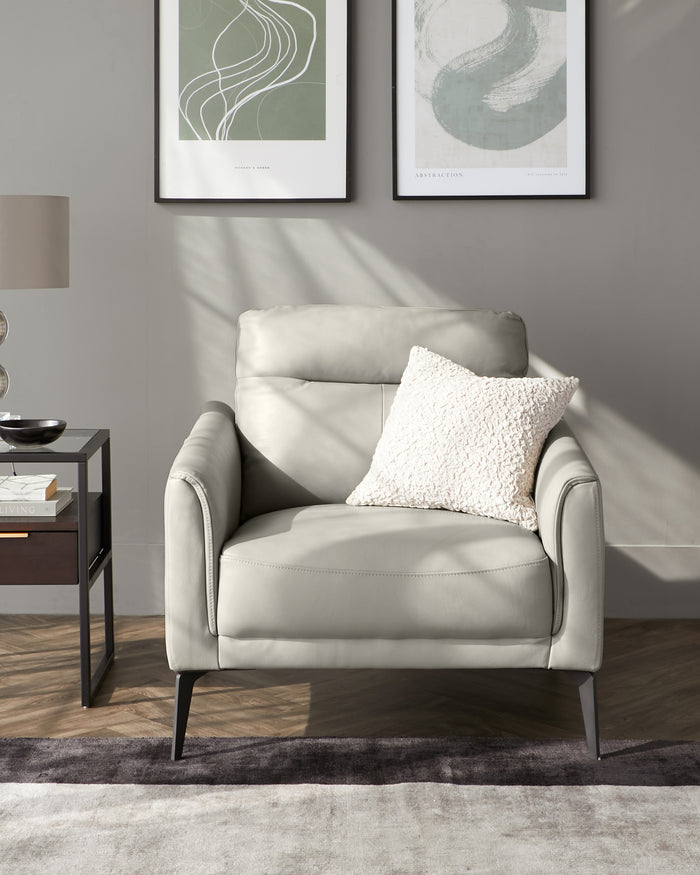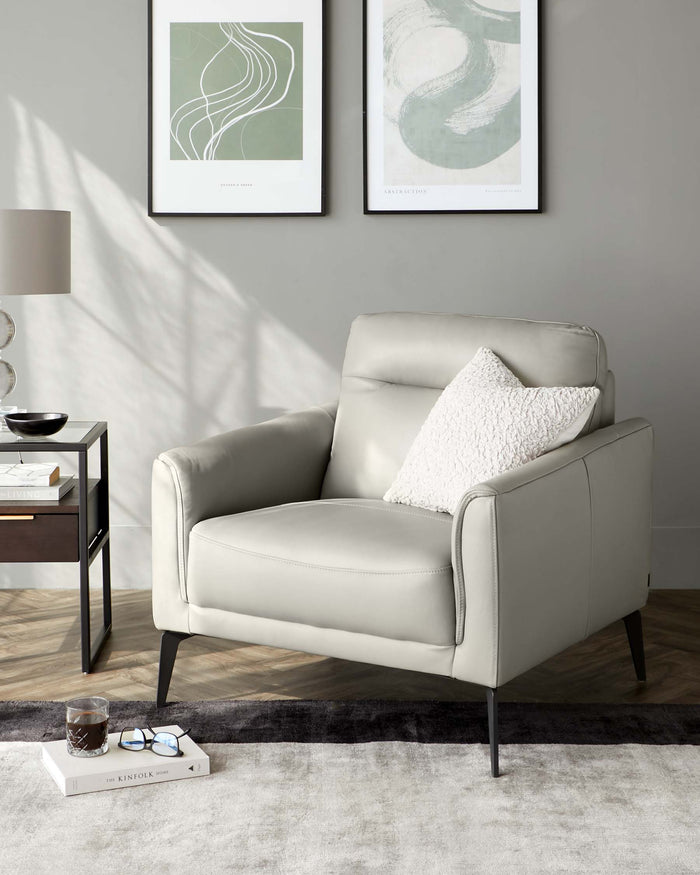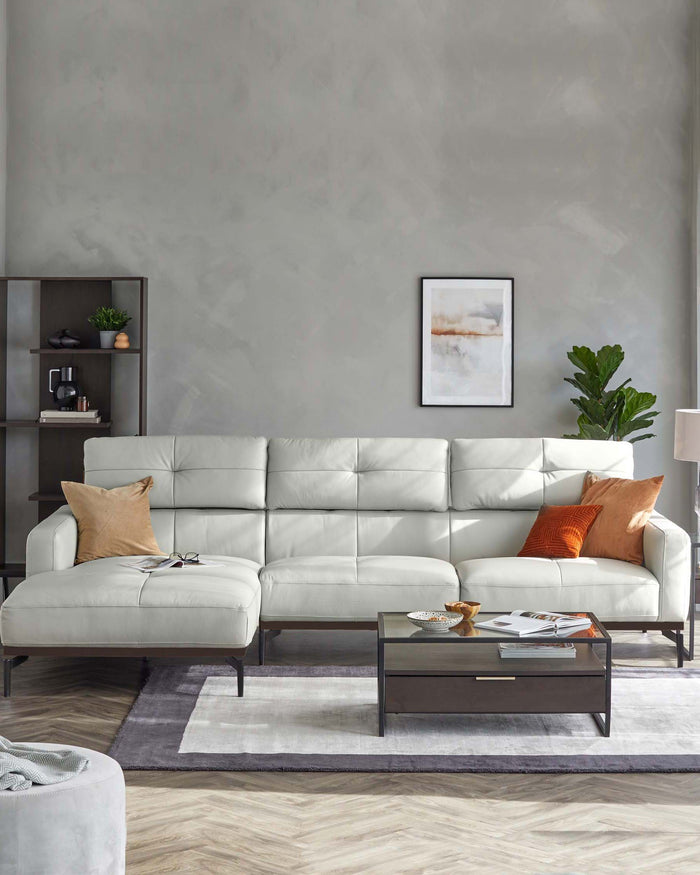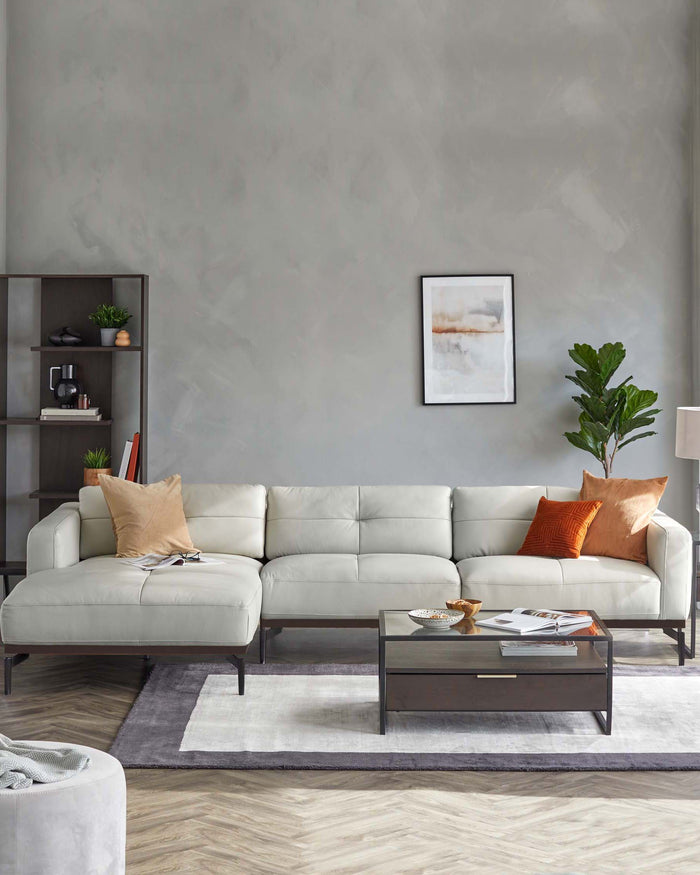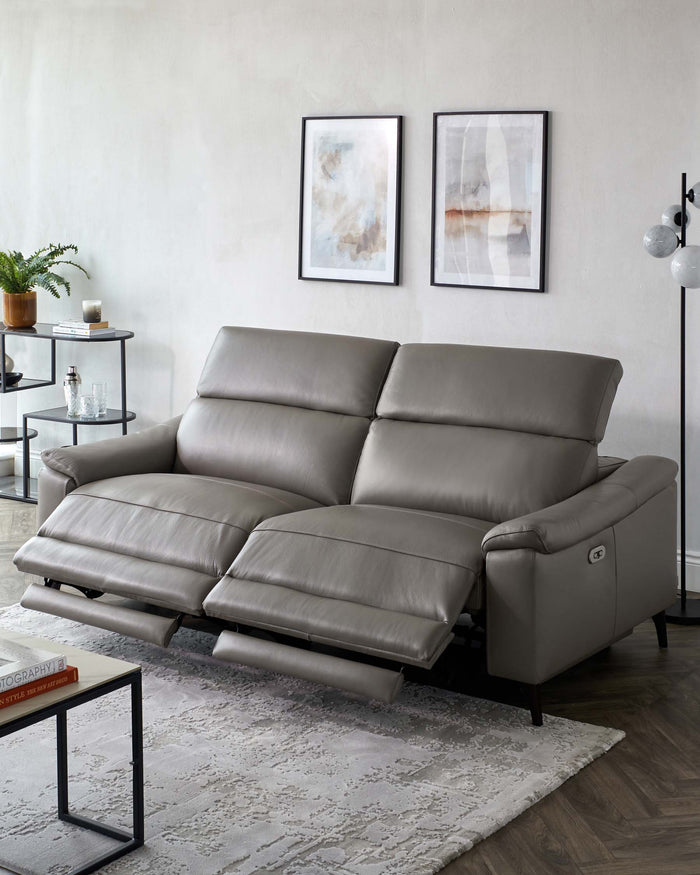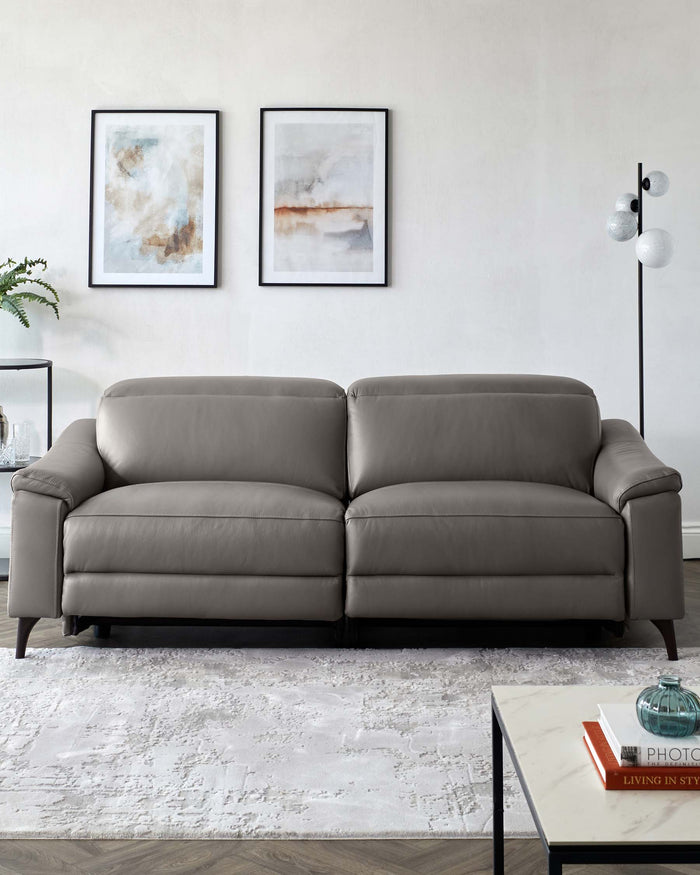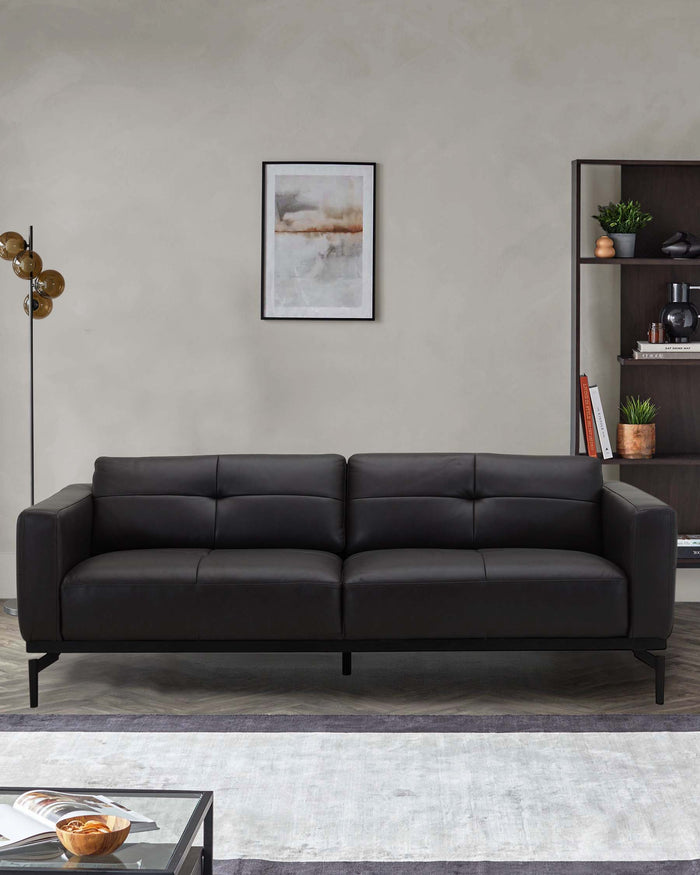As any interior designer or furniture specialist will tell you, a sofa is one piece of furniture that you should really invest in. This means choosing a sofa that is built to last, that performs well over time and that can stand up to daily use in a busy home. Real Leather ticks all of these boxes, which is exactly why real leather is such a popular choice for a sofa; it is undoubtedly the most durable material available. You can’t beat it for long-term performance, durability, ease of maintenance and of course… Modern Style!
What Makes Real Leather So Durable?
The leather we use for our range of sofas is extremely thick and falls into the Top Grain Leather category. Top Grain leather goes through a considerable process to remove any marks and blemishes on the hide to create its uniform appearance and makes it more desirable for home furnishings.
Our pigmented Top Grain Leather has been dyed and treated with a protected surface. This offers great colour uniformity and maximum resistance to spills and stains, while it’s thickness also increases its strength and durability. All together you end up with a high-quality leather that looks great but also is very fit for purpose.
Thinner, lower quality ‘Split’ leather is commonly used in cheaper sofas but will not offer the same durability. It will wear quicker and be more susceptible to rips and tears, meaning you’ll be replacing your furniture much sooner than anticipated.

Luxe black leather 2 seater chesterfield sofa
Top Tip: Aniline Leather, often cited as the most premium type of leather, actually has little to no treatment to protect it. So whilst it is a premium material, it may not be the most practical for a modern sofa. This type of leather is used when people want to build a worn look, or patina, but it doesn’t give a clean, uniformed look.
Top Grain vs. Split Leather
Top Grain – The top layer of the hide usually the thickest layer when the hide is separated. Top grain is the highest quality, thickest part of the hide and such requires less processing resulting in a softer feel.
Split Leather – This is the thinner part of the hide and as such often needs a protective synthetic top treatment. The result is a lower quality more rigid leather.
One Leather Doesn’t Fit all…
The term ‘leather sofa’ is used very broadly, so it’s easy to forget that the leather itself comes in a whole variety of styles and, more importantly, standards. Here’s a quick breakdown of the most popular choices for a leather sofa:
High Protection Leather
- Pigmented Leather – A top grain leather that’s had dye and protection applied to the surface. As a result, this offers protection from marks and stains and evens out surface appearance. Features of Pigmented leather are great durability, very even colour and grain and a soft feel.
- Bi-Cast Leather – A split leather with a thick synthetic layer placed over the leather which is embossed with a look-alike grain. The features of Bi-Cast leather are a stiff texture (more suited to contract settings), consistent grain and easy cleaning.

Medium Protection Leather
- Waxed Leather – The surface of the leather is buffed, then waxed and has a smooth, very shiny appearance with almost no grain which can be wiped clean. Waxed leather will show scratches but can be re-waxed although has a stiffer feel and can be prone to cracking.
- Semi-Aniline – A top grain leather that is pigment dyed and treated with a very light protective treatment. It has some of the features of aniline leather but with a harder feel and increased durability.
Low Protection Leather
- Aniline Leather – A top grain leather dyed with aniline dyes but with no protective treatment applied. Features of aniline leather are that it is very soft and luxurious in feel and will show natural blemishes, scratches and scars found in the hide. Aniline leather also has variation in colour consistency. People often see Aniline leather as the best in class but it doesn’t have the protection that other leathers have.
- Nubuck – a top grain leather which has been treated so the natural fibres produce a velvet-like surface. Soft to the touch it has an almost fabric-like look and feel but has no protection at all from marks or spills.
- Vintage Leather – Leather that has been double-dyed and purposefully buffed in areas to give an aged look. A feature of aged leather is that the uneven surface can be quite forgiving but it has very little ongoing protection.
The Do’s and Don’ts of Cleaning Real leather
Because leather sofas are so durable, it makes them even easier to care for. Marks and spills from food and drink are easy to remove compared to marks on a fabric sofa. However, stick to our do’s and don’ts of cleaning to make sure you keep your real leather looking its best:
DO use an absorbent cloth or sponge to wipe the affected areas as soon as the spill occurs. Lukewarm water or diluted mild detergent should do the trick!
DO be sure to dry your leather furniture after cleaning with a clean, soft cloth rather than leaving your leather furniture to air dry.
DO check the label before using any product to check that it’s not too drying on leather. If you’re not sure, spot test an inconspicuous area first!
DO invest in a leather maintenance kit. Find one which will look after the leather before, during and after cleaning to make sure your leather furniture lasts for years to come.
BE AWARE that keeping your real leather sofa in direct sunlight can cause some fading and deterioration over time. Sunlight will have the same effect on fabrics so just give it some thought when you consider the placement.
BE AWARE that brand new clothes, especially jeans, can mark upholstery. To clean marks left by clothing, use something such as a magic sponge immediately for the best results.

Brooks light grey leather armchair
Give Your Real Leather Furniture Some TLC
Real leather is strong and very durable, however, you still need to give it some TLC to keep it looking its best for longer! With this in mind…
- Don’t drag your sofa when putting it in position, but rather lift it to manoeuvre it in your space.
- Sofas can be very heavy, so it’s important to protect your flooring. Many sofas will come with floor protectors but make sure there’s some kind of protection on the feet, especially if you’re placing the sofa on wooden or hard flooring.
- As tempting as it may be, try not to sit on the arms of the sofa. This will not only weaken the structure of the sofa over time, but it will also pull on the upholstery.
- When cleaning, don’t forget to get in-between all the small nooks and crannies of the sofa cushions. Vacuum regularly to keep your sofa spick and span.
- Do not use chemical-based cleaners on real leather. Spot clean with warm, soapy water, and invest in a high-quality Leather care kit.
- If the cushions on your sofa can be moved, it’s a good idea to rotate them regularly, giving them a good shake and plump up.
- Give your sofa a quick but regular clean to stop marks from building up over time. Just be sure to wring out your cloth thoroughly and dry as soon as you’ve finished.
- Everyone has their favourite spot, but it’s best to use your sofa evenly. This will stop some parts becoming more used and worn than others.
Have we convinced you that a leather sofa is definitely a smart choice for your home? Be sure to let us know in the comments!

